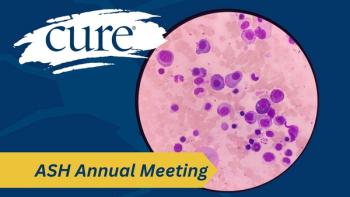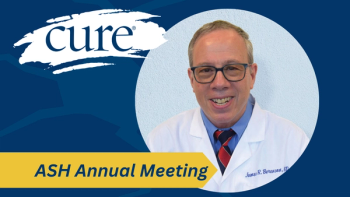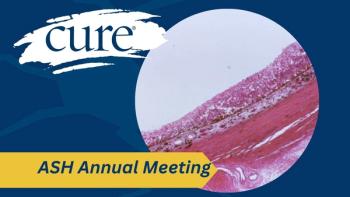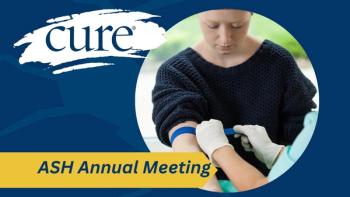
For Young Breast Cancer Survivors, Doctor Attention to Exercise Is Key
Researchers have found that nothing beats direct attention from a care provider to inspire exercise among young women who have been recently diagnosed with breast cancer.
Health care providers need to personally encourage physical activity among young women who have been diagnosed with breast cancer, according to the findings of a new study.
While the 467 patients enrolled in the study initially reported a median of no moderate or vigorous weekly physical activity, those whose doctors gave attention to exercise were spending a median of 100 minutes active weekly a year later; the median amount of activity was 40% less (60 minutes per week) for patients who didn’t receive provider attention.
“It really matters that oncologists and the team that care for patients … talk to their patients about a healthy lifestyle, about exercise being important part of their cancer care,” said study co-author Dr. Jennifer A. Ligibel of the department of medical oncology at the Dana-Farber Cancer Institute and Harvard Medical School in Boston. “Because I think it was pretty clear that (when) people, with their oncologist, addressed these topics, they were more likely to be engaging in things that we think of as healthy lifestyle behavior.”
The study, published in the journal Cancer, utilized data from the Young and Strong Study, which enrolled women who were younger than 45 and newly diagnosed with breast cancer between July 2012 and December 2013.
While the Young and Strong Study was designed to primarily evaluate the impact of education and intervention “on attention to fertility and other issues specific to young women newly diagnosed with breast cancer,” the physical activity aspect was a pre-planned secondary analysis of the study’s findings.
“My first reaction (reading the study) was just pure excitement that we're studying this, that we're looking at the impacts of exercise in patients when they're going through treatment,” said Amanda Napolitano, executive director of the
With a median age of 40 and body mass index of 25.4, study participants were provided with one of two print- and web-based interventions, the Young Women’s Intervention (YWI) addressing genetics, body image, childcare, fertility, education and career issues, or the physical activity educational intervention (PAI) with information on the benefits of moderate and vigorous physical activity, according to the study.
Both groups of patients were provided with a print booklet as well as physician visit checklists and access to a website with the information in the pamphlet and additional resources.
Physical activity increased over time for participants in both groups. Members of the PAI group, who initially reported a median of 20 minutes of weekly activity, spent a median of 60 minutes per week active six months after enrollment and 90 minutes a week after 12 months. Patients in in the YWI group, who began with a median of no weekly activity, were active for 40 minutes a week at six months and 75 minutes a week after 12 months.
That increase in activity, according to the study’s authors, “was not impacted by a self‐directed print‐material and web‐based physical activity intervention.” Instead, the authors posited, it was the result of personal interaction between patients and caregivers.
“Giving people the information, ‘Yes, you should exercise, it's important to eat healthfully,’ that that didn't make a lot of huge differences in people's lifestyle, I'm not terribly surprised by that,” said Ligibel. “Because I think we all hear very frequently (that) these are things you should do.”
It was encouraging to read that patients saw better outcomes when care providers worked with patients to establish exercise as part of their treatment, Napolitano said.
“That makes sense to me,” she said. “But I'm also encouraged that, because the studies are coming out, more doctors, hopefully, will look at the results of these kinds of studies and begin to specifically incorporate exercise as a part of the (treatment) program.”
The Young and Strong Study’s findings are precedented, as its authors noted: A survey of more than 15,000 patients with colorectal cancer in the United Kingdom found that 51% of patients whose providers discussed exercise were more likely to be active, compared with 42% of patients whose providers didn’t discuss exercise.
Likewise, a study conducted by the American Society of Clinical Oncology, “found that individuals whose providers discussed exercise as a part of cancer treatment were more likely to make changes in lifestyle after cancer diagnosis and exercised more frequently than patients whose providers did not discuss exercise,” with 43% of surveyed patients reporting that their providers never discussed exercise with them, according to the authors of the Cancer study.
Breast cancer, according to the study, is the leading cancer among women between 20 and 39 years old; there were an estimated 16,000 new cases in the United States in 2022. It’s also the top cause of cancer death among women in their 20s and 30s, with rates on the rise (climbing nearly 2% annually for women in their 20s and .2% annually for women in their 30s), with young women at increased risk of breast cancer mortality compared to older women.
Lifestyle factors including obesity and inactivity have “been linked to poor outcomes in young women with breast cancer,” the authors wrote, with obesity at the time of diagnosis and inactivity after diagnosis associated with a higher risk of both breast cancer-specific and all-cause mortality and both weight gain and reductions in physical activity associated with poor outcomes, according to the study.
Discussing the importance of studying this group of patients, Ligibel said that younger women are more likely to experience weight gain as a result of cancer treatment, and many of the existing models for encouraging people to live a healthier lifestyle are geared toward older women.
‘Every oncologist should be talking to their patients about the importance of exercise.’
In addition to the American Cancer Society’s guidelines for cancer survivors, earlier this year the American Society of Clinical Oncology published a document on what patients should be told during treatment.
“It unequivocally came to the conclusion that every oncologist should be talking to their patients about the importance of exercise,” Ligibel said.
“We know we know that exercise helps prevent people from becoming deconditioned,” Ligibel explained. “It helps preserve their strength, it helps to prevent things like fatigue. And there are many randomized trials that show this.”
In addition to the National Marathon to Finish Breast Cancer — which CURE® co-sponsors and held its 16th annual event in February in Jacksonville, Florida — the DONNA Foundation’s calendar includes a Health and Wellness Expo over marathon weekend, the Mother’s Day 5K being run in Jacksonville on May 13 (with a virtual option also available) and other events as part of its survivorship, education and awareness program.
“It was always important to us that we're better when we're better,” said Napolitano. “We're healthier when we're healthier. So, giving people a reason to begin to train, to walk, to exercise, to be able to come out and celebrate survivorship with one another at our events has just really been always a priority and important to us.”
Ligibel recommends that patients consult resources such as the guidelines from the American College of Sports Medicine and ask their providers what exercise they recommend.
“Oncology visits are really busy, there are a lot of different things that you need to cover, you need to be thinking about adherence to endocrine therapy and making sure that people are getting their mammography on time,” Ligibel said. “And sometimes people just forget about the impact of lifestyle on breast cancer. So I think the more patients bring these things into the clinic, the more that it reinforces that this is an important part of cancer care.”
For more news on cancer updates, research and education, don’t forget to





